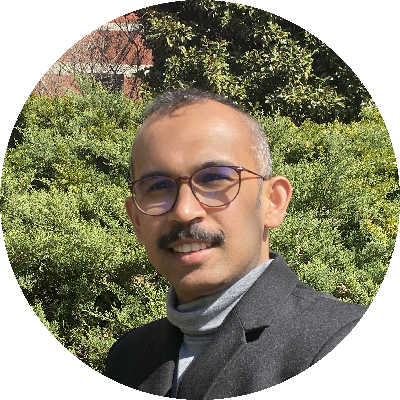
Janaka Senarathna
Neuroscientists rely on small animal models to study the brain in exquisite detail. However, today’s brain imaging devices are massive, require anesthesia and often limit imaging to less than an hour. While miniature devices that allow brain imaging in behaving animals exist, they can only image neuronal or vascular function, not both, and only permit imaging for a few hours. These limitations significantly diminish our capacity to study brain function and restrict our understanding of the neurovascular unit and its role in brain diseases. To address this critical gap, with the mentorship of Drs. Arvind Pathak and Nitish Thakor, I developed a new class of miniature and implantable brain imaging devices dubbed “multicontrast miniscopes,” which for the first time enables studying both neuronal and vascular activity in freely behaving animals continuously over a 24-hour period. Multicontrast miniscopes would be tools of choice for the modern neuroscientist and enable an entirely new class of neuroimaging experiments, making possible breathtaking neuroscientific discoveries.
Questions & Answers
Why did you choose Johns Hopkins for your work?
I chose Johns Hopkins because it offered a unique combination of expertise in the core fields of biology and engineering. This invaluable “para-disciplinary amalgamation” of research thinking enabled me to create cutting-edge biomedical devices that tackled critical biological problems with fundamental engineering principles.
What does receiving this award mean to you personally and professionally? Do you have any connection with the particular award you received?
I can still remember watching the movie Something the Lord Made 10 years ago as a young graduate student. This was the story of how Alfred Blalock and Vivien Thomas pioneered a surgical solution to the blue baby syndrome at Johns Hopkins, which was based on their extensive preclinical research of similar disease models. The movie spoke volumes to me, especially as I was going through similar struggles to what Blalock and Thomas faced, designing my own biomedical imaging devices. Later on, I used to look up the portraits of Blalock and Thomas hung near the main loop of the hospital and made a point to describe them any time I took a new student on a campus visit. At times when I wandered through the corridors of the research buildings, I have often seen hanging on the walls various faded grayscale photographs of previous residents at the hospital with Blalock posing as their proud mentor, and the residents have signed their name and thanked Blalock for his mentorship. This has been a pleasant sight to me, as I also consider it a great virtue to mentor students and have proudly mentored more than 20 thus far. For these reasons, receiving the Alfred Blalock Research Award means a lot to me and inspires me to reach greater heights.
What contributed to your project’s success?
There have been so many failures, and I believe many more are to come, but great mentorship, collaborators, amazing students and sheer perseverance are what keep us going as a team.
What thoughts do you have about Young Investigators’ Day itself, as a celebration of the roles students and fellows play in research at Johns Hopkins?
Students and fellows invest an unbelievably massive amount of physical and mental effort, and valuable time in their research. I believe events like Young Investigators’ Day play a vital role in acknowledging these sacrifices and investments and create a platform for us to grow both professionally and personally.
What has been your best/most memorable experience while at Johns Hopkins?
I am an engineer by profession and was a newbie to biology at the beginning of my research career. Therefore, watching for the first time a movie of in vivo neuronal calcium activity in the mouse auditory cortex obtained using the imaging device I built is a memory I will never forget.
What are your plans over the next year or so?
I am actively looking for faculty positions and am excited to start my own research program.
Tell me something interesting about yourself that makes you unique. Do you have any special hobbies, interests or life experiences?
I grew up in Sri Lanka, where there was a two-decade-long brutal war. Although we were in the city, far away from the war zone, I lived in anticipation of suicide bombers and realized firsthand the value of human life and lasting peace. As I look at what’s happening in today’s world, it gives me a unique perspective on life and humanity. In the past, I’ve also been a stage actor, mainly directing and acting small comedies, and was an avid toastmaster.